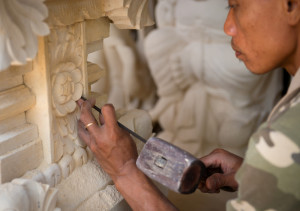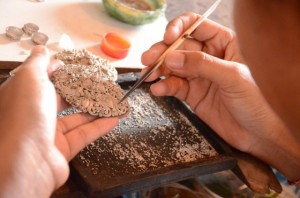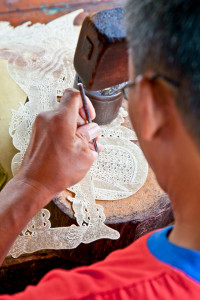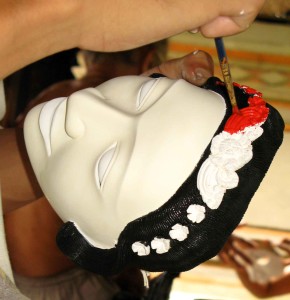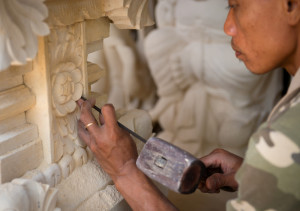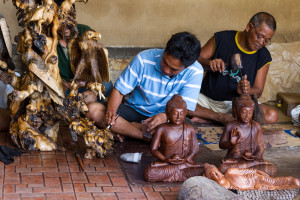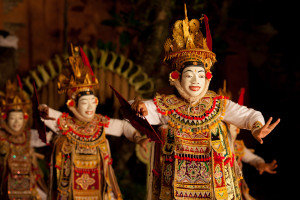Ubud is a remarkable town in the middle of the island of Bali. For more than a century, it has been the island’s preeminent centre for fine arts, dance and music. Its surroundings there are village where the artisan live their daily life dedicated to the arts and culture. Let’s visit each village and discover their culture life.
Batubulan
This day to explore Ubud artisan village with the first stop of the day is at Batubulan village to see the Barong and Keris dance performance. Batubulan Meaning “moon stone”, this village is famous for stone carvings of demons, gods, and animals carved out of soft “paras” rock. Local art from this village can be seen throughout Bali —in temples and shrines, also homes and hotels who bought their stone decoration from this village
Celuk
Later we visit to Celuk Village gold and silver smithing workshops. Celuk is the first village you will come upon. Along the road you will find 30 shops. The silversmiths and goldsmiths of this village are famous worldwide. Their style range are from the traditional, highly decorative filigree style to contemporary pieces of streamlined geometrical shapes. Here you can see children learning the craft from their elders in the numerous studios on the main road and side streets.
Sukawati
The next stop will be Sukawati village, five minutes from Celuk on the road to Ubud. This village is famous for its “dalangs” the masters of the wayang kulit (shadow puppet theater). The most famous puppet masters are Wayan Wija and I Wayan Nartha. You can visit both of their home studios near the produce market.
Singapadu
After Sukawati we will visit Singapadu village. This village is not on the main road to Ubud but at the back road from Sukawati. The real reason to come to Singapadu is to visit the homes of mask makers. The famous mask maker I Wayan Tangguh live here and also Nyoman Juala. It is in this village where most of the Balinese mask performers buy their mask. The masks here are still made in the traditional fashion.
Batuan
This village is just up the main road to Ubud from Sukawati. Batuan is famous for its history, dancers and Batuan style paintings. Batuan style painting with its stunning black and white portrayal of daily Balinese life can be found in the studios of Made Buti Wayan Rajin amongst others. Later Batuan works of art filled a busy canvas with traditional daily activities to tourist carrying cameras.
Mas
This village has a long tradition of Brahman clans. The great priest Nirartha migrated to Mas in the 16th century from Java. Many temples were built in Mas and the Pura Taman Pule was built in honor of this priest. Mas is now the home of some of Bali’s most famous woodcarvers. Wood carving skill in Mas have passed from father to son for years. Originally all the carvers were Brahmans whom worked on religious projects. In the thirties a new style developed influenced by Walter Spies. This new style depicted scenes from daily life. These include the studios of Ida Bagus Tilem, with a showroom of a modern carvings.
Ubud
The next and the final stop along this tour is Ubud. There are a great many things to see and do in Ubud. The Puri Lukisan Art Museum in a nice garden setting was founded in 1953 and Neka Museum House some of Bali’s finer paintings. They also contain a wide variety of different styles of Balinese paintings. The streets are lined with galleries. I recommend Antonio Blanco’s House and Gallery, and Lempad’s down past the market on Jalan Raya Ubud. The Arma museum in Pengosekan is well worth the walk to the nearby village. A number of classical dance groups give regular performances in the evenings. Among them are Semara Ratih in Ubud, and Gunung Sari Dance Troupe in Pelitan.

